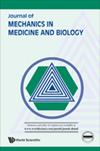脑卒中相关疾病的中药处方分析
IF 0.6
4区 医学
Q4 BIOPHYSICS
引用次数: 0
摘要
脑中风是一种脑血管疾病,已成为全球第二大死亡原因。它与许多疾病密切相关,包括高血压、糖尿病、老年性痴呆等。随着中药方剂越来越多地用于治疗中风及其相关疾病,人们开始使用机器学习方法来分析中药方剂并总结其规律。在本研究中,我们收集了中国经典方剂的数据。采用Jaccard相似系数法计算不同处方间的相似度。然后,我们采用平均连锁聚类,将慢性疾病(如糖尿病、高血压和冠心病)的药物处方分为12组。其中包括“心衰温肾汤”、“窦室结证、四重一郁、益气、活血养心汤”、“神经一、抑郁一、天麻钩藤饮”、“八味降压汤、贫血汤、降压汤、心肌活饮”等。我们观察到相似的处方有更多有意义的相互参考。随后,运用关联算法对“适应症”与“处方成分”进行分析,揭示出11条有效的关联规律。其中,心悸与黄芪、当归、决明子枝相关性强;弱用丹参、黄芪、黄芪;治头痛用川芎;和黄芪引起的眩晕。这些发现为中医药治疗脑卒中及相关疾病提供了理论参考。本文章由计算机程序翻译,如有差异,请以英文原文为准。
Analysis of traditional chinese medicine prescriptions for cerebral stroke-related diseases
Cerebral stroke, a type of cerebrovascular disease, has become the second leading cause of death globally. It is closely related to many diseases, including hypertension, diabetes, senile dementia, and so forth. As traditional Chinese medicine formulas are increasingly used to treat stroke and its associated diseases, people have begun to use machine learning methods to analyze Chinese medicine prescriptions and summarize their laws. In this study, we collected the data from classic Chinese formulations. Using the Jaccard similarity coefficient method, we calculated the similarity between different prescriptions. We then employed average linkage clustering, categorizing medicine prescriptions for chronic diseases such as diabetes, hypertension, and coronary heart disease into 12 groups. Some of these included “Heart Failure and Warm Kidney Soup”, “Sinus Chamber Junction Syndrome, Quadruple One Depression, Yi Qi, Activating Blood and Feeding Heart Soup”, “Nerves One, Depression One, Tian Ma Hook and Vine Drink”, and “Bawei Antihypertensive Decoction, Anemia Decoction, Hypotension Decoction, Myocardial Live Drink”. We observed that similar prescriptions had more meaningful mutual references. Subsequently, a correlation algorithm was used to analyze the “indications” and “prescription composition”, revealing 11 effective correlation rules. Among these, palpitations were strongly correlated with Astragalus membranaceus, Angelica sinensis, and cassia twig; weakness with Salvia miltiorrhiza, A. membranaceus, and A. sinensis; headaches with Ligusticum wallichii; and vertigo with A. membranaceus. These findings provided a theoretical reference for using traditional Chinese medicine in treating cerebral stroke and associated illnesses.
求助全文
通过发布文献求助,成功后即可免费获取论文全文。
去求助
来源期刊

Journal of Mechanics in Medicine and Biology
工程技术-工程:生物医学
CiteScore
1.20
自引率
12.50%
发文量
144
审稿时长
2.3 months
期刊介绍:
This journal has as its objective the publication and dissemination of original research (even for "revolutionary concepts that contrast with existing theories" & "hypothesis") in all fields of engineering-mechanics that includes mechanisms, processes, bio-sensors and bio-devices in medicine, biology and healthcare. The journal publishes original papers in English which contribute to an understanding of biomedical engineering and science at a nano- to macro-scale or an improvement of the methods and techniques of medical, biological and clinical treatment by the application of advanced high technology.
Journal''s Research Scopes/Topics Covered (but not limited to):
Artificial Organs, Biomechanics of Organs.
Biofluid Mechanics, Biorheology, Blood Flow Measurement Techniques, Microcirculation, Hemodynamics.
Bioheat Transfer and Mass Transport, Nano Heat Transfer.
Biomaterials.
Biomechanics & Modeling of Cell and Molecular.
Biomedical Instrumentation and BioSensors that implicate ''human mechanics'' in details.
Biomedical Signal Processing Techniques that implicate ''human mechanics'' in details.
Bio-Microelectromechanical Systems, Microfluidics.
Bio-Nanotechnology and Clinical Application.
Bird and Insect Aerodynamics.
Cardiovascular/Cardiac mechanics.
Cardiovascular Systems Physiology/Engineering.
Cellular and Tissue Mechanics/Engineering.
Computational Biomechanics/Physiological Modelling, Systems Physiology.
Clinical Biomechanics.
Hearing Mechanics.
Human Movement and Animal Locomotion.
Implant Design and Mechanics.
Mathematical modeling.
Mechanobiology of Diseases.
Mechanics of Medical Robotics.
Muscle/Neuromuscular/Musculoskeletal Mechanics and Engineering.
Neural- & Neuro-Behavioral Engineering.
Orthopedic Biomechanics.
Reproductive and Urogynecological Mechanics.
Respiratory System Engineering...
 求助内容:
求助内容: 应助结果提醒方式:
应助结果提醒方式:


